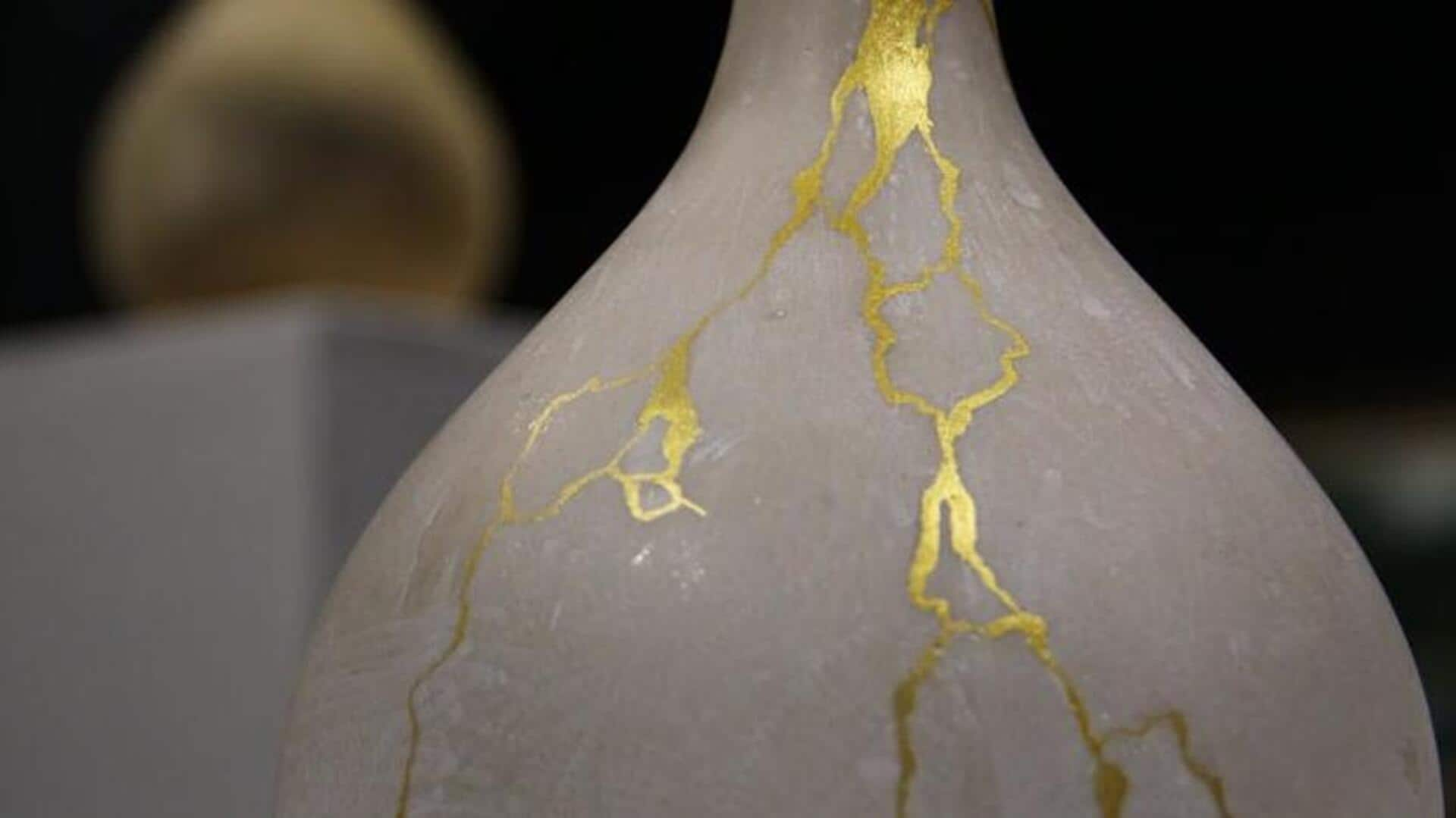
Discover the beauty of Japanese Kintsugi
What's the story
Kintsugi, the traditional Japanese art of repairing broken pottery, involves mending it with lacquer mixed with powdered gold, silver, or platinum.
This way not only is the item restored but its fractures are also highlighted, embracing imperfections as the item's own history.
Dating back to the 15th century, Kintsugi embodies a philosophy that appreciates resilience and beauty in imperfection.
It teaches us to accept flaws and celebrates the unique journey of each object.
Origins
Historical roots and philosophy
Kintsugi originated in Japan's Muromachi period when shogun Ashikaga Yoshimasa sent a broken tea bowl to China for repairs.
The returned product was unsatisfactory, so local artisans devised an aesthetically pleasing technique.
Thus, Kintsugi came to life, in harmony with Wabi-Sabi—a philosophy that admires transience and imperfection.
Components
Materials used in Kintsugi
In the art of Kintsugi, lacquer acts as a strong adhesive, holding broken pieces together with strength.
Precious metals such as gold and silver powder are then used to highlight the repairs, making scars an artistic highlight.
These materials are key, not just for their job in restoration but also for contributing significantly to aesthetics.
They convert visible damage into beautiful unique patterns, celebrating the object's new form and history.
Methods
Techniques involved in Kintsugi
The Kintsugi process starts by cleaning broken pieces thoroughly, then a strong lacquer is used to bond them together.
Aligning them carefully ensures a seamless join. Additional layers of lacquer fill in any gaps, with each layer sanded down for smoothness.
Finally, metallic powder is dusted over the seams, enhancing their look. This technique requires precision at every step, ensuring both item's functionality and beauty.
Contemporary uses
Modern applications of Kintsugi
Today's artists take principles beyond ceramics—using them as a metaphor in their work, be it fashion design or digital art projects.
Using the creative expression, these projects highlight resilience amidst adversity.
They draw inspiration from the traditional technique and innovate it within modern contexts without losing the essence.
The essence, which is rooted deeply within cultural heritage.
It dates back centuries to Japan's rich artistic legacy, which is globally known today as Kintsugi.